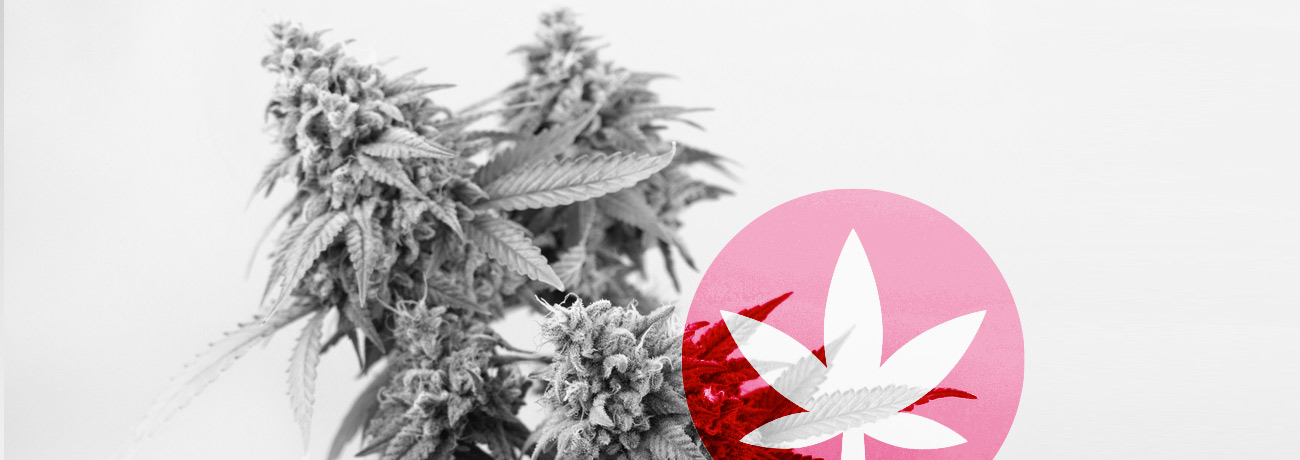The Difference Between Cannabis and Hemp
Last updated:
Published:
It’s time to clear up any lingering doubt you may have about the difference between hemp and cannabis. Why is it that so much controversy surrounds the plant, but at the same time there is always talk of its potential health benefits? The truth is, there are more similarities than there are differences between these two varieties, yet each features unique characteristics and individual benefits.
CANNABIS SATIVA L.
What we refer to separately as “cannabis” and “hemp,” are simply different genetics from one and the same mother plant Cannabis sativa L. The differences between cannabis and hemp as we know them are the result of years of selective breeding. The most abundant naturally occurring compound in Cannabis sativa L. is psychoactive, followed by the beneficial compound CBD. Historically, farmers have bred Cannabis plants to contain disproportionately high concentrations of psychoactive cannabinoids, while limiting the already small percentage of natural CBD.

IT’S ALL IN THE NAME
Cannabis is a term predominantly used in reference to the psychoactive bud-bearing female plants that have been the source of both idolatry and hatred for centuries. Throughout most of history, cannabis was referred to as “marijuana,” a term swamped with negative connotations and an unfortunate naming history. The renewal of the term “cannabis” is a rebranding response to reposition it as a safe plant with health potential, instead of an illegal drug.
Incidentally, “hemp” (which is a precursor title before marijuana) almost exclusively describes the plant used to make a wide variety of practical and edible products that won’t make you feel high. Hemp is popularly used across skin and hair care products, as well as beneficial oils, milk substitutes and pulp made from its stalks.
Hemp as a food supplement is high in protein, second only to the soybean. Hemp seeds contain all 9 essential amino acids humans don't produce, as well as the remaining 11. Hemp shows continued promise as a source of fuel and as a fibrous additive used in ethical paper production and recycling.
CULTIVATION & BREEDING
Hemp and cannabis has been bred over generations to adopt certain traits and lose others. In its natural form, Cannabis sativa L. grows outside in close enough proximity to naturally pollinate. This will cause female flowers to produce seeds and the life cycle to continue. You may have heard that cannabis is the female plant and hemp is the male, but this is not true.
Cultivators breed psychoactive cannabis strains to produce the most potent highs possible. Home cannabis growers largely use feminized seeds so their plants don’t cross pollinate. Once mature, these plants produce unfertilized, trichome-rich flowers, which offer an array of cannabinoids, which can be decarboxylated and consumed for psychotropic effects.
Generally, psychoactive cannabis plants are grown to be relatively small and bushy, allowing for a great deal of stems to support flowering. Hemp on the other hand is grown tall to encourage heftier stalks that can be used for everything from building houses to making carpets.
Hemp strains are bred to contain negligible levels of psychoactive content. This is ideal to fulfill their roles in infrastructure, manufacturing and food production. Hemp still contains the important cannabinoid CBD, which is of manifold health potential.

LEGAL CONTROVERSY
The importance of rhetoric is no more felt or seen than in reference to Cannabis sativa L. In Earnest Small’s book “The Species Problem in Cannabis,” the researcher draws an arbitrary distinction, denoting that hemp shall contain less than 0.03% THC to be categorized as such. This position influenced (and in some cases directly became) the standard for hemp production in many nations.
HEALTH BENEFITS
While many cannabis breeds contain potent psychoactive content between 10-30%, these compounds offer beneficial properties including sleep induction, appetite stimulation and nausea reduction. Research also suggests more applications for psychoactive cannabis in the realm of serious conditions like cancer and epilepsy.
Hemp is widely used for its seeds, which offer profound nutritional benefits. In addition to protein, hemp is high in essential polyunsaturated and saturated fats. It also features unsuppressed concentrations of CBD, which provide a host of anti-pain and inflammatory benefits. Hemp and psychoactive cannabis both contain dozens of other cannabinoids and terpenes that work together synergistically to provide a wholesome course of therapeutic possibilities.
THE MOST VERSATILE PLANT
Although the psychoactive variation between these two breeds influences their uses, Cannabis sativa L. is a plant with far-reaching significance. Even though the diction concerning “cannabis” vs. “hemp” may change, it is now clear how much the plant is influenced by economic and political precedents.
At Cibdol, we only use naturally grown European hemp to make our purified golden CBD oils. Our products are guaranteed to be non-spycoactive and undergo transparent, rigorous testing to ensure the finest quality in every product.








.png)




